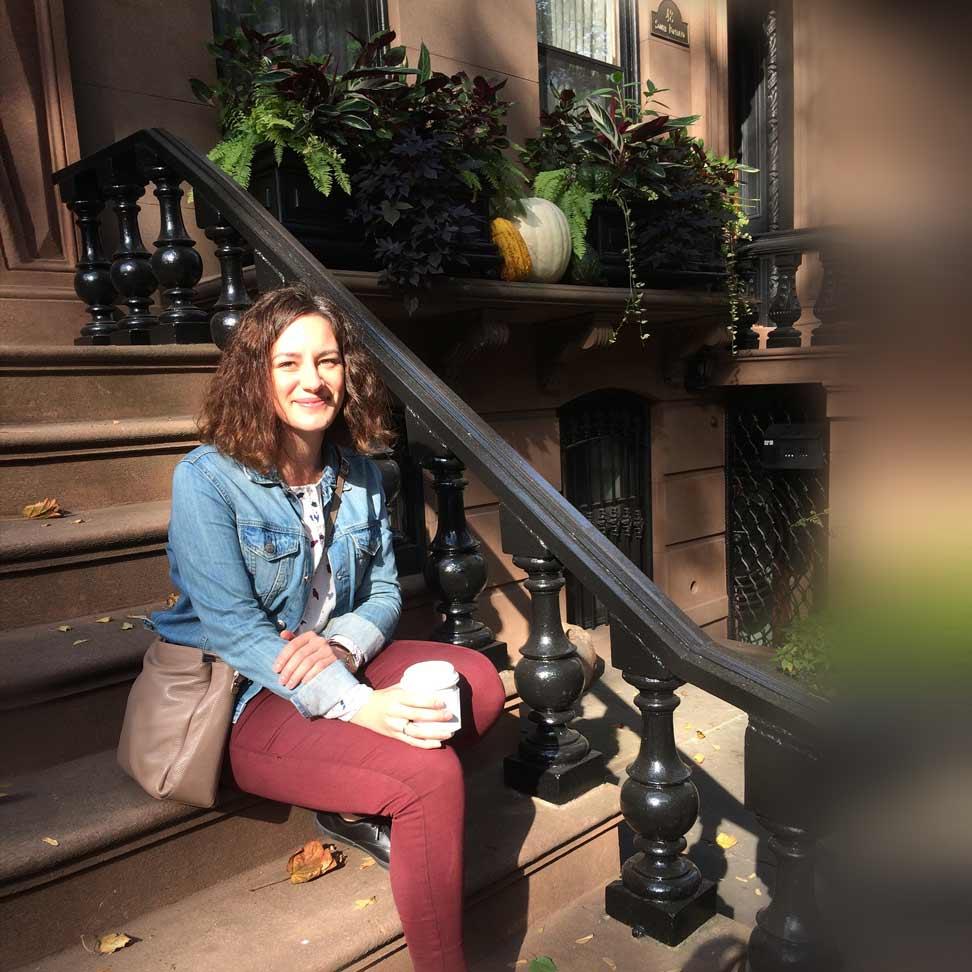Capital city of island nation Japan, Tokyo is the heartbeat of the country. With a population of 13 million in the city proper, the population overflows further into the surrounding area, adding 24 million to the total. The city’s borders contain busy boulevards, peaceful gardens, cutting-edge technology, world-class food, shrines and temples and countless subcultures.
Despite its large population, Tokyo’s chaos is controlled, with its many people, buildings and activities fitting together just so. In fact, Tokyoites are experts at making the most of small spaces, and the entire city is like an enormous game of Tetris.
Our expert on the ground Selena Hoy shows you what to do in Tokyo on a week-long trip.
Arrival
There are two airports serving Tokyo: Narita (NRT), which leans international, and Haneda (HND), which leans domestic, though both airports have a mix of domestic and international traffic. NRT is located in Chiba Prefecture to the north-east (way past Disneyland) and takes around one to two hours to get into the city. HND lies within Tokyo city limits and takes only about 30 minutes to get to some of the city’s main areas.
The most common way to get into the city is by train (Narita Express, Sky Access Express and Skyliner, or regular train from NRT, and the Tokyo Monorail or Keikyu Line from HND). Some people prefer the so-called “limousine buses” as they are direct and don’t require any schlepping of luggage, while taxis are a splurge and could easily run upwards of ¥20,000 ($178) from NRT.
Practical tips
Follow the lines on the floor when you’re queuing for the metro © Craig Stanfill
The train system is the backbone of Tokyo, and it’s possible to go almost anywhere on it. A successful trip depends on learning how to navigate the sprawling system, which includes several companies running interwoven networks of above-ground trains, subways and a few elevated lines or monorails.
The train system is clean, safe and efficient, though not exactly cheap, and is almost always the best way to get from point A to point B. These days, Google Maps does an admirable job of mapping out transit routes, or you can use a dedicated application like Jorudan. Tokyo Metro’s tourist-only metro cards are a good value and are sold at airports, travel agencies and some hotels.
If possible, you’ll want to travel outside of rush hour (around 7-9am and 5-7pm), unless you like pressing your body against hordes of sweaty strangers. Many trains also offer a women’s car (located at the end of the train) as a preventative measure against gropers.
The size of the city means that once you’re out of your hotel, it’s likely that you won’t be back until the end of the day. You’ll want to choose comfortable shoes and a bag big enough for all your essentials. Also, Wi-Fi in the city is getting better, but still spotty, so try to have all your key information saved if you don’t have data. Alternatively, you can rent a pocket Wi-Fi that guarantees high-speed internet access throughout the entire country. There are many providers you can choose from – eConnect, Rental WiFi and Japan Pocket WiFi are easily recommendable.
Skyscrapers and subculture – Shinjuku, Yoyogi Park & Shimokitazawa
Tokyo Metropolitan Government Building looming high in the back © cinaflox
Home to the world’s busiest train station, Shinjuku is not for the faint of heart. The area is packed with skyscrapers, restaurants, parks and attractions. Get started with an early morning view of the city from the Tokyo Metropolitan Government Building, then pass the time in the calming Shinjuku Gyoen (one of the city’s biggest gardens). Afterwards, take a stroll through the skyscraper district for some shopping at famous department stores like Isetan or electronics giants like Yodobashi Camera.
Shinjuku Gyoen is a tranquil haven in an otherwise busy area
A few stations to the west of Shinjuku are the subculture-rich enclaves of Koenji, Nakano and Kichijoji. Make a visit to Shimokitazawa, where you can wander the streets looking at vintage stores, shop for records while drinking coffee, and catch some live music (punk, rock, or indie) in the evening. For dinner, sample rustic organic farm food at Nomin Cafe.
Where to stay in the area
If you’ve ever fancied trying out a capsule hotel or just want to save some cash, there are a few in Shinjuku that cater to both male and female guests, like Nine Hours (rates start at ¥2,280 [£16] per room, per night).
Shopping, fashion & nightlife – Shibuya, Harajuku & Omotesando
Takeshita Dori Street is the best place for people watching and quirky shopping © hajono
If you walk through Yoyogi Park from north to south, you’ll make your way to Harajuku by way of the Meiji Shrine, one of the country’s major Shinto shrines and a haven of quiet in the city. Once you’ve soothed away the stress, plunge back into the mix and trawl the streets of Takeshita Dori and Cat Street to check out youth fashion, then transition to high fashion by walking up the broad Omotesando Avenue.
Although breakfast and brunch spots are not big in most of Japan, restaurants serving pancakes and eggs have gained popularity in recent years in this area. Stop at Australian-inspired Bill’s if you can stomach the wait, or pop into Aoyama Flower Market Tea House for a stylish mid-afternoon break. And during baseball season (late March to October), visit Meiji Jingu Stadium for a game with the Yakult Swallows.
Watch the world go by at the famous Shibuya Scramble Crossing
No trip to Tokyo is complete without a visit to Shibuya and its famous Scramble Crossing, followed by a wander through the maze of shopping streets opposite the station. Stock up on stationery supplies at Loft, look at the free art gallery at Bunkamura, and as night falls, duck into one of the scores of izakaya (dining bars) in the area, like Kaikaya (seafood) or Maruhachi (kitschy dive bar).
Where to stay in the area
Hotel Unizo is right in the mix, with clean business-hotel style rooms that are small (normal for Tokyo) but good value (rates start at ¥10,260 [£72] per room, per night).
Highfalutin art and culture – Roppongi, Ginza & Tokyo Station
The famous spider sculpture Maman standing tall in front of Mori Tower in Roppongi Hills © IQRemix
The area east of Omotesando, from Roppongi to Tokyo Station, is characterized by swanky buildings, embassies and the Imperial Palace. Excluding the palace, the architecture is modern, shiny and futuristic, though mostly lacking in grit. This is the neighborhood to get your deep art and culture fix. Start with contemporary art and stunning city views at Mori Art Museum. Move on to the National Art Center before grabbing a soba lunch at Sarashina Horii in Azabu-Juban, where your soba noodles are made from scratch by a ninth generation chef whose family has been making soba (buckwheat) for over 200 years.
If you’re feeling inspired, consider taking a cooking class from Tokyo Cook, where you can learn about soba, tempura, tofu and more. The classes are held inside the luxury Shojin Sougo restaurant, where you can dine on gourmet shojin-style (Buddhist plant-based) cuisine.
You can also head over to the Kabuki-Za theatre in Ginza to watch a performance, followed by Michelin-starred sushi at Sushi Iwa (reservations recommended), then a walk through the Imperial Palace grounds.
Where to stay in the area
In keeping with the art theme, try Park Hotel Tokyo in Shiodome, where one floor features “artist rooms”, each painted by a local artist (rates start at ¥15,680 [£110] per room, per night).
Welcome to low town – Ueno, Asakusa & Akihabara
The Shinobazu Lotus Pond in Ueno Park
The areas to the north and east of Tokyo Station were historically known as “Shitamachi” or “low town.” The name refers to the physical geography of the area, which is closer to the Sumida River and farther from the Imperial Palace, but also coincides with neighborhoods that feel rougher around the edges than their uptown counterparts.
Ueno Park is one of the district’s most famous landmarks, boasting a large zoo and several museums, including the Shitamachi Museum. To the east of Ueno is Asakusa, home of Sensoji, perhaps Tokyo’s most famous temple. Enter the temple precinct at Kaminarimon (Thunder Gate), and proceed along Nakamise, the traditional shopping street leading to the temple. The narrow street is filled with vendors selling street food, trinkets and religious paraphernalia – a great place to pick up some souvenirs and try some freshly made senbei (rice crackers).
Sumo wrestlers gather for the ring-entering ceremony before a bout at Ryogoku © Aussie Assault
Across the river is Ryogoku, home of the sumo stadium: a must-see experience if you’re in town during a match and can get tickets. Adjacent to the sumo hall is the Edo Tokyo Museum, a fascinating history museum that shows a glimpse of life in the old capital when it was known as Edo. Complete the experience with a visit to Mitsugi Sushi, which serves up Edomae-style sushi made using traditional techniques and ingredients unique to old Edo.
Where to stay in the area
The Gate Hotel Kaminarimon (rates start at ¥7,560 [£53] per room, per night) has a prime location just minutes from the Sensoji Temple and boasts large, polished rooms with great views.
A final tip: Tokyo is teeming with heaps of wonderful and wonderfully weird places. So wander a little. Get lost. And you’re sure to stumble upon something fantastic.
More travel inspiration
- Planning a trip to another great city in Asia? Find out what to do in Hong Kong for fre


